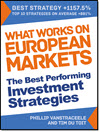If you are investing your own money, this article will show you a smarter way to find undervalued stocks using composite value metrics. Instead of relying on one ratio like Price-to-Sales, you will learn how combining multiple metrics gives you a clearer, more accurate view of a company’s real value. This helps you avoid bad investments and improve your returns. You will also see how to use composite metrics easily with tools like the Quant Investing stock screener. If you want better returns with less risk, this is essential reading.
Estimated Reading Time: 6 minutes
Why Composite Value Metrics Matter in Your Investing
When you’re investing your own money in the stock market, understanding a stock’s true value is crucial. The best way to do this is by using composite value metrics. Unlike single metrics, which look at just one part of a company, composite metrics combine several ratios.
This gives you a more complete picture of a stock’s value and helps you make smarter investment decisions.
The Problem with Single Metrics
Relying on a single metric, like Price-to-Sales or Price-to-Book, can lead to mistakes. Each of these metrics only looks at one part of a company’s value. For example, the Price-to-Sales ratio compares a company’s stock price to its revenue. While this can tell you something about the company’s value, it doesn’t consider things like debt, profitability, or cash flow.
The Price-to-Book ratio compares the stock price to the company’s assets but might miss important things like profits and cash flow.
So single metrics can mislead you.
For instance, a company might look cheap based on its Price-to-Book ratio, but if it has high debt or low profitability, it might not be a good investment. If you rely on just one metric, you could miss these warning signs and make a bad investment decision.
The Benefits of Composite Metrics
This is where composite value metrics come in. By combining several ratios, you get a fuller, more accurate picture of a company’s value. For example, instead of just looking at Price-to-Sales, you might also consider Price-to-Earnings, Price-to-Cash Flow, and other factors. This combination helps you see the company’s value from different sides, reducing the risk of being misled by any single metric.
Jim O’Shaughnessy, a well-known investor, saw the problems with single metrics early on. He used to rely on Price-to-Sales as a key metric in his investing strategies. But through research, he found that combining multiple value metrics gave a better view of a company’s worth.
By using a composite of different factors, O’Shaughnessy was able to get a clearer picture of a company’s value, leading to more consistent success in his investment returns.
How to Use Composite Metrics in Your Investing
If you want to start using composite metrics in your investing, it’s easier than you think.
For example, the Quant Investing stock screener has the following composite ratios available. They are all updated daily, and you can use with a few mouse clicks.
Click here to start using the Composite Ratios in your stock screens NOW! - Click here
Quant Value Composite
-
Price to Sales: The lower, the better,
-
Price to Earnings (PE): The lower, the better,
-
EBITDA Yield or EBITDA to EV: The higher, the better,
-
FCF Yield (FCF to EV): The higher, the better,
-
Shareholder Yield: The higher, the better.
Value Composite One
1. Price to book value
2. Price to sales
3. Earnings before interest, taxes, depreciation and amortization (EBITDA) to Enterprise value (EV)
4. Price to cash flow
5. Price to earnings
Value Composite Two
1. Price to book value
2. Price to sales
3. Earnings before interest, taxes, depreciation and amortization (EBITDA) to Enterprise value (EV)
4. Price to cash flow
5. Price to Earnings
6. Shareholder Yield
Qi Value
1. EBITDA Yield (EBITDA / EV)
2. Earnings Yield (EBIT / EV)
3. FCF Yield (FCF / EV)
4. Liquidity (Q.i.) (Operating profit / Yearly traded value)
Momentum Composite
1. Price Index 3m, (Three-month price momentum) - Higher is better
2. Price Index 6m, (Six-month price momentum) - Higher is better
3. Price Index 9m (Nine-month price momentum) - Higher is better
4. Volatility 12m (Twelve-month price volatility) - Lower is better
Start by choosing a few key metrics that are important to you and see the kind of companies the composite ratios come up with.
I am sure you will be positively surprised! By adding composite metrics to your investment strategy, you can make better decisions.
Conclusion
Composite value metrics give you a more complete way to assess a stock’s value. By combining multiple metrics, you get a fuller picture that helps you make smarter investment decisions. While single metrics can sometimes be good enough, composite metrics reduce this risk by giving you a broader view.
If you’re serious about improving your investment strategy, start using composite metrics. They give you a more accurate assessment of value and can help you avoid costly mistakes.
Click here to start using the Composite Ratios in your stock screens NOW! - Click here
FREQUENTLY ASKED QUESTIONS
1. Why should I stop using just one ratio like PE or Price-to-Book?
Because it only shows one side of the story. For example, a stock may look cheap using Price-to-Book, but if it has high debt or weak profits, it is likely a bad investment. Composite metrics combine several ratios to give you a fuller picture, helping you avoid these traps.
2. I already use PE and Price-to-Sales. Is that enough?
Not quite. Those are a good start, but you are still missing key pieces - like cash flow and debt. Composite metrics like the Quant Value Composite also include EBITDA Yield and Free Cash Flow Yield. These tell you more about how well the business runs and how much cash it generates.
3. How do composite metrics actually help me make better stock picks?
They reduce the risk of being misled. When you use 5–6 metrics together, you smooth out the flaws of any one of them. This helps you spot companies that are truly undervalued - not just “cheap-looking” on the surface.
4. What is the easiest way to start using composite metrics in my own investing?
Use a tool like the Quant Investing stock screener. You can apply composite filters like “Qi Value” or “Value Composite Two” in just a few clicks. It does the calculations for you - and updates daily.
5. I am not great with numbers. Can I still use these composite metrics?
Yes. You do not need to calculate anything yourself. The screener builds the composite scores for you. Just focus on using them to find strong candidates, then review those companies further.
6. Can composite metrics work in different markets—like the US and Europe?
Yes. These ratios work globally. Valuation principles like low PE and high cash flow are universal. The Quant Investing screener covers over 22,000 companies worldwide.
7. What if a stock scores well on a composite but has low momentum? Should I buy it?
That depends on your strategy. If you value safety and consistency, you may wait for better momentum. Some investors combine value and momentum composites to get both upside potential and downside protection. We recommend you always use a system to keep losses low.
Click here to start using the Composite Ratios in your stock screens NOW! - Click here


